Has bathroom lighting now stepped out of the shadows, challenging the technology found in kitchens? Think integral illumination, decorative statements and colour matching.
It’s not for the first time bathroom design has followed kitchens, from furniture units – think tambour doors and internal compartments – through to decors.
And the multi-functional role kitchens play in the home, from practical cooking area to living space, has been mirrored in the bathroom too.
Sponsored Video
Although not a public area– a Me rather than a We space – the bathroom now combines the function of cleaning as well as relaxation, and this is met by layering lighting.
Managing director of lighting supplier Industville Marketa Rypacek comments: “Both rooms are similar in that they benefit from functional task lighting as well as decorative lights, which helps to create a layering effect.”
But managing director of InHouse Wayne Dance points out: “The use of LED lighting in the kitchen has not witnessed dynamic change. However, the use of bathroom lighting has sky rocketed, swiftly moving from mirrors and mirrored cabinets to task intelligent colour-changing models and furniture that features fully-integrated and motion sensor lighting.”
And marketing manager of Utopia Nicola Hardwick agrees “The choice of lighting for bathroom is now mush more sophisticated with mood lighting and motion activated sensors to allow the homeowner a flexible choice of lighting solutions.”
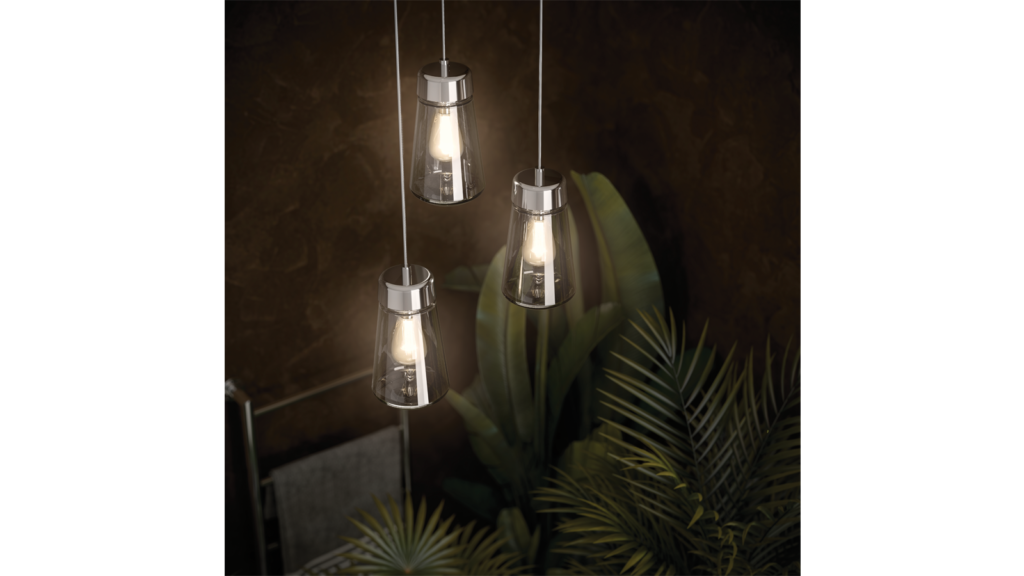
Summit pendant lighting from HiB features a handblown glass shade, encasing a retro LED lamp. It is IP44-rated and comes with an adjustable 1m cable
Popular lighting
Ceiling spots and illuminated mirrors and cabinets are still be the most popular choice for a bathroom, as product manager for Sensio Lighting Neil Oldfield points out: “Illuminated bathroom mirrors and cabinets continue to be a large growth area in bathroom lighting.”
It’s perhaps because they can provide additional lighting in the smallest of spaces.
A wider choice of lighting has seen greater interest in decorative lighting too.
Marketa Rypacek of Industville states: “We have seen a huge interest in pendant lighting and it adds a uniqueness to the bathroom. We are also finding that customers like their interior style to carry from room to room.”
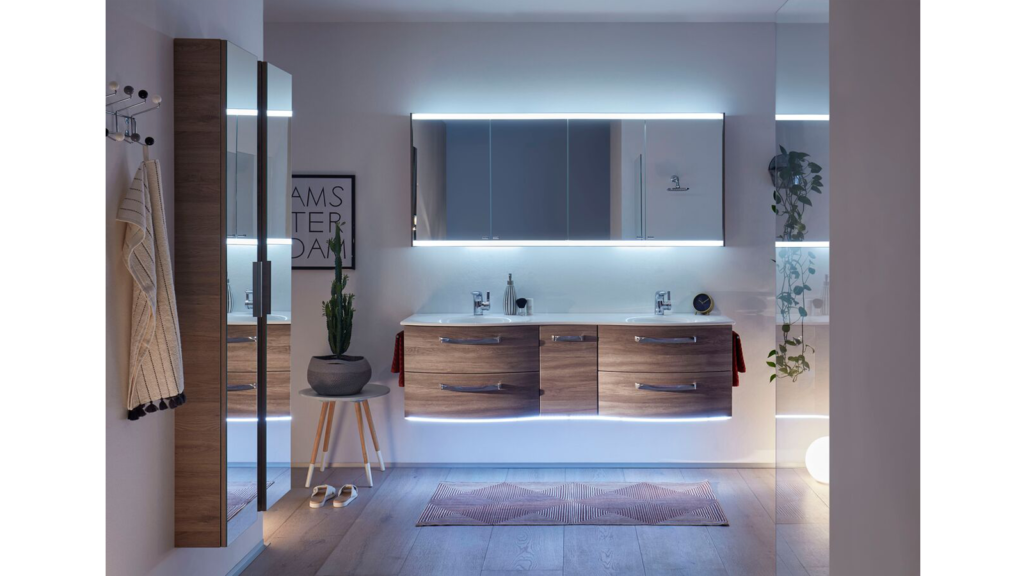
The use of lighting creates a partnership of functionality and luxury, as in the Solitaire 7025 from Pelipal. It has a motion sensor which switches the light on when the user approaches
Integrated illumination
At the same time, to provide layered lighting, there has been a growth in illumination integrated into furniture and even nightlights in WCs.
Just like soft-close doors in the kitchen, Illumination can add a further level of luxury into the bathroom, as marketing manager for VitrA Margaret Talbot explains: “Strategically placed LED lighting into furniture not only enhances the product but adds a feeling of comfort, warmth and security, turning a practical product into a genuine lifestyle enhancement.”
Such has been the move towards furniture featuring integral lighting, Utopia has just introduced its Contemporary Fitted with three points of illumination.
Nicola Hardwick of Utopia comments: “Plinth illumination creates a subtle, ambient light which lifts the base cabinets while the lighting under the wall cabinets gently illuminates the worktop and basin area beneath. Finally, the ceiling illumination frames the whole concept, transforming the atmosphere in the room.”
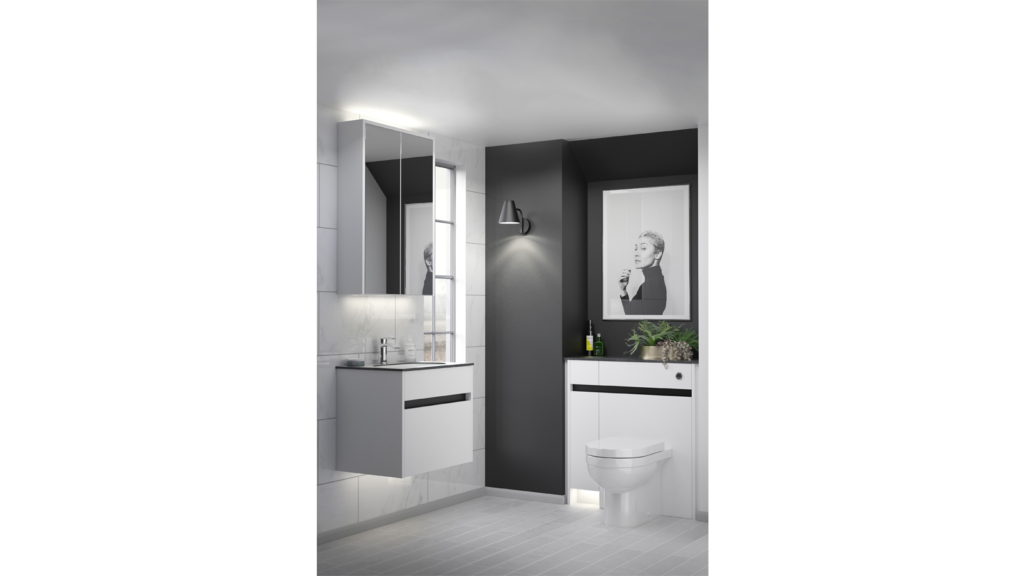
The Contemporary Fitted furniture collection from Utopia three points of illumination. This includes plinth lighting, illumination beneath the wall cabinet and above to act as an accent
Consider colour matching
However, an increase in lighting also brings with it a new level of complexity, ensuring colour renditions match. “Having consistency of colour is key”, exclaims Marketa Rypacek.
And Neil Oldfield of Sensio advises designers to check they emit the same coloured LED light, as well as offer an IP-rating.
He continues: “At Sensio all our lighting works together and from the same 24V drivers and controllers to ensure and optimum and desired output.”
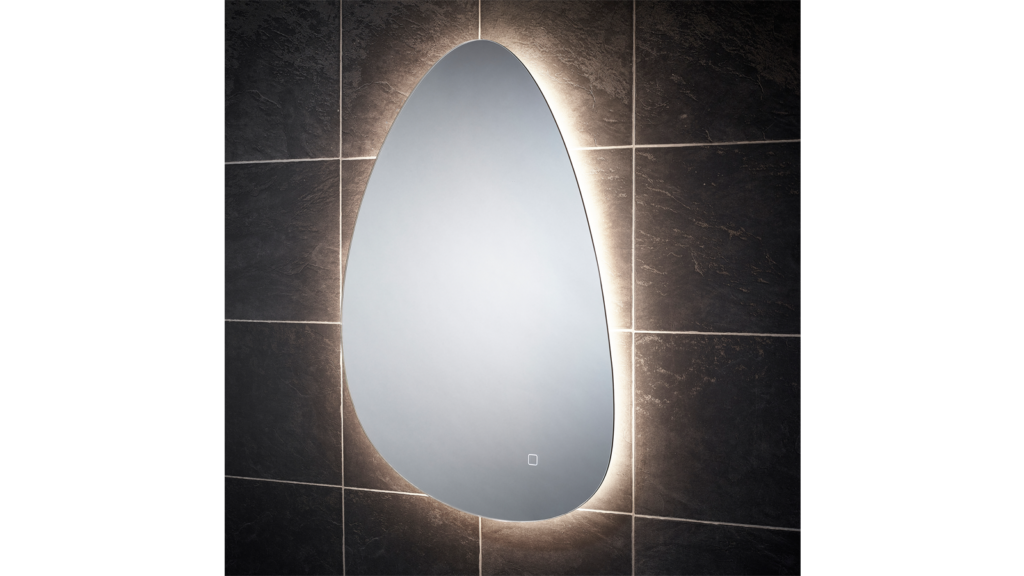
Mistral from Sensio is an 800x500mm pebble shaped mirror, which can be fitted portrait or landscape ,and with a backlit design. It comes with touch sensor control and offers a choice of cool or warm white colour temperatures
In fact, bathroom companies now offers colour changing lights to not only adjust for the requirement of the day/night but also to tune with complementary illumination.
The Duravit XViu mirror and mirrored cabinets can come with an icon control on the mirror’s surface, which has a colour changing mode and can be continuously adjusted from 2,700 kelvins (warm light) to 6.500 kelvin (cool light).
And HiB also offers colour-changing mirrors as its sales director Ash Chilver points out: “illuminated mirrors which offer adjustable light temperature, providing homeowners with endless lighting possibilities can completely change the ambience of any space.
“For example, the pure white, almost blue end of the spectrum is ideal for creating a slick appeal and making sanitaryware look sharper, whilst warmer hues are perfect for generating a cosy, homely feel. All of which encapsulate the spa-like atmosphere.”
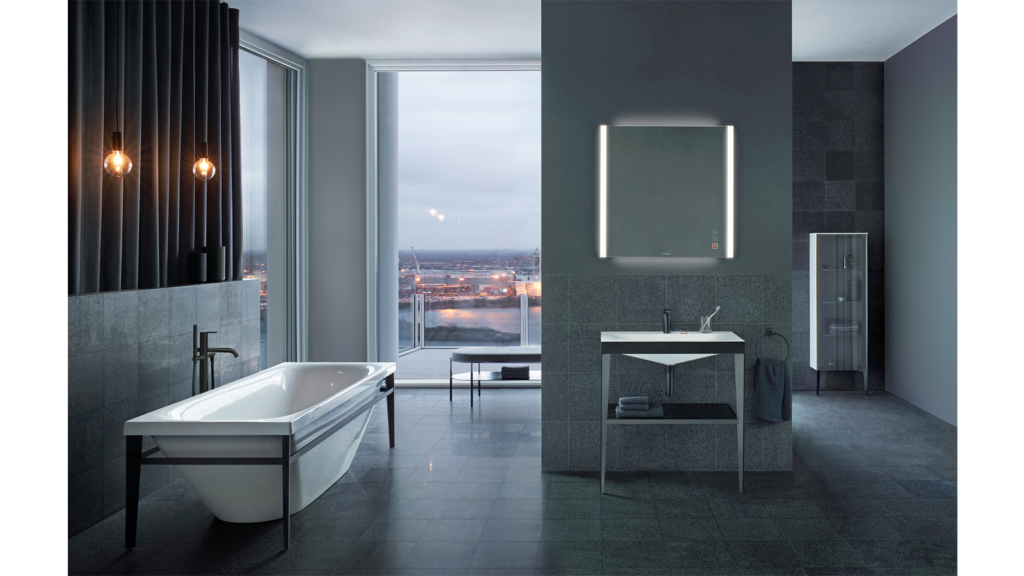
Xviu mirrors and mirror cabinets from Duravit can come with an icon control on the mirror’s surface. It has a colour changing mode and can be continuously adjusted from 2,700 kelvins (warm light) to 6.500 kelvin (cool light)
Creating whole concept
But most importantly, accomplished designers will consider lighting as part of the overall bathroom scheme.
Wayne Dance of Inhouse concludes: “Today’s bathroom designer has a responsibility to create relaxing and functioning spaces and whilst integrated LED lighting has transformed bathroom design, it’s crucial to consider how elements work together.
“The latest innovative lighting options are putting the creativity into bathroom design and that is exciting.”
Also take a read of the latest trends for kitchen lighting.



